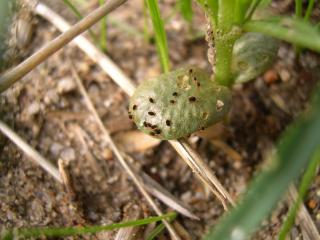Western Australian grain growers who notice high numbers of redlegged earth mites (RLEM) in sprayed canola and cereal crops are now able to test for chemical resistance.
RLEM (Halotydeus destructor) is an important pest of germinating crops and pastures across Western Australia, with canola, lupins, and legume seedlings the most susceptible to attack by the mites.
The Department of Primary Industries and Regional Development is again making available a screening service to growers and advisers to test for insecticide resistance in RLEM, following previous screening in 2017.
The free-of-charge service, made possible with investment by the Grains Research and Development Corporation (GRDC), is led by The University of Melbourne, in collaboration with cesar, the department, and CSIRO.
Department research officer Svetlana Micic said RLEM resistance to synthetic pyrethroids, including bifenthrin and alpha-cypermethrin, was becoming widespread across the Western Australian grainbelt.
“Localised resistance to organophosphate omethoate has also been discovered on multiple properties,” Ms Micic said.
“While insecticide options are limited, it is vital to minimise chemical use and rotate chemical groups to reduce the spread of insecticide resistance.
“Growers are advised to use different chemical groups across successive spray windows (on multiple generations of RLEM), to help reduce resistance to a particular chemical group.”
Growers who find RLEM that survive registered rates of insecticide treatments are encouraged to arrange for resistance testing to be conducted by contacting Ms Micic on svetlana.micic@dpird.wa.gov.au, or +61 (0)8 9892 8591.
Department research officer Dusty Severtson said high numbers of redlegged earth mites were being found in canola and cereal crops in northern and central grain growing areas.
“Growers and consultants are encouraged to be aware of the large number of RLEM being found in crops that have already been sprayed,” Dr Severtson said. “Clover pastures are also at risk.”
Dr Severtson encouraged growers and consultants to monitor RLEM to prevent significant damage in a short period, the death of plants and stunting of surviving plant growth.
Growers who notice a chemical control failure should not re-spray the paddock during the same season using the same product, unless insecticide resistance has been ruled out. The calibration of spray rigs and other causes should then be investigated and resolved.
The RLEM Resistance Management Strategy can be found on the GRDC website at grdc.com.au, and the

Media contacts:
Jodie Thomson / Dionne Tindale, media liaison +61 (0)8 9368 3937
